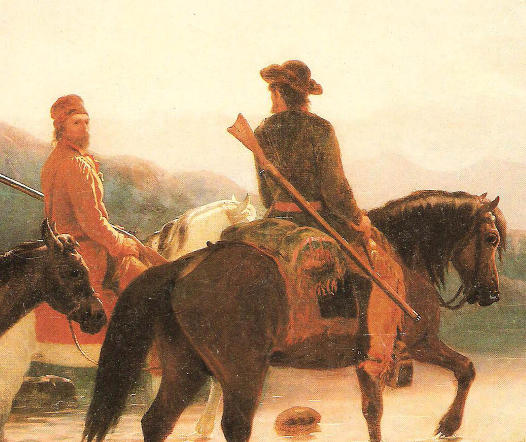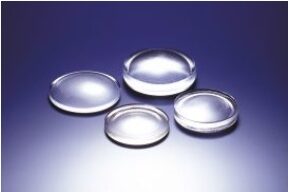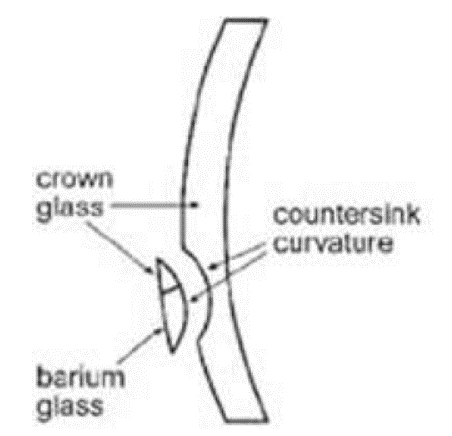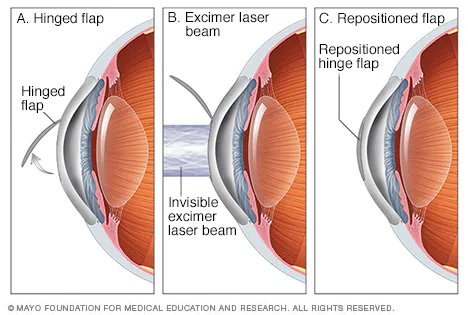Introduction
We have maintained our proud record of producing an edition of Forum for each month of 2022. As a contributor and editor, John Sharp has played a central role in this, but sadly, ill health has forced him to step down. We send him our thanks and best wishes. In the short run, the Committee will try to keep the show on the road but we hope that in 2023 we will find a new editor to develop Forum and help to educate and entertain all of us.
In this edition we have reports on Committee activities and on Peter Firth’s Course. Our main article is from Mary Ormsby and draws on her research and development work at Pilkington’s. Her ‘Short History of Sight Correction’ reminds us just how much we rely on science whenever we sit down to read Forum or any other piece of print.
December means Christmas and every Christmas publication must include at least one Christmas article and one Christmas quiz. Christine Vasey has supplied both. Her article on Christmas traditions, and especially that memoir from 1992, will bring back memories for many of us. Her quiz questions range even more widely moving from ancient Rome to modern Japan via Leonard Bernstein.
Roger Mitchell
PS: As many of you will know, we had an excellent lecture from Will Daunt last Friday. A full report will appear in January’s edition. Our new sound system was used for the first time. It is still a work in progress, but it has a promising future.
The Era of the Crusades
Peter Firth’s 9-session course was the result of a request from those attending previous courses wanting Peter to bring his experience and passion to inform them about the crusades. They were not disappointed.
Over 20 members enrolled and both attendance and enthusiasm remained very high throughout. The reason was simply the excellent preparation Peter undertakes, which he clearly enjoys, together with how he relates to his audience with ease and patience. His deep knowledge, a meticulous attention to detail brought this ‘era’ to life and introduced us to many important and often little-known participants in these extraordinary happenings.
Few of the attendees had fully understood the number of crusades that took place, the long time-scale they spanned and the changing dynamics of Byzantium, Islam and Western Europe caused by such ventures. Peter approached the topic by trying to get us to understand the medieval mindset and the central role played by the church at this time. A simple ‘call to arms’ by Pope Urban II in 1095 at the Council of Clermont served as a catalyst for many complex and bloody campaigns over hundreds of years. Peter’s lectures skillfully revealed the breadth and scope of such events including their ongoing consequences and their long-term effects.

Peter was able to chronicle these events and bring an understanding of the impact it had to individuals, to countries and to cultures. We began to understand the complex nature of both religious and secular pressures on commoners and nobles alike to take part and the power that offering indulgences (a way of reducing the amount of punishment for one’s sins) had on those willing to ‘crusade’ or support those that did. A feature of the course was the way Peter encouraged many thought provoking questions from his attendees that often led to what he called his ‘homework’ where he followed up and fed back on related subjects adding further value and knowledge.
Peter’s willingness to encourage and answer questions, involve those attending and encourage speculation was very well received. We briefly took a detour to the Battle of the Boyne (Papal flags being used to support one side), Shakespeare’s Merchant of Venice (understanding what was meant by the term Moor) and the philosophy of Aristotle (What is Holy War?). Between sessions, Peter kindly shared all his presentations so there was an opportunity to revisit his research at leisure and consider his inputs at a pace appropriate to each learner’s needs. As a result, those attending felt fully informed and extremely satisfied at the end of a very successful course that was over all too soon.
Alan Potter
Forthcoming Course – Art and Architecture of the American West
First Meeting on Monday 9th January at 10:30am, All Saints Church

Roger Mitchell’s eight week course on ‘Art and Architecture of the American West’ should provide a welcome escape from the English winter. Roger first visited the West back in the 1970s and since then he and Glendon have had many memorable holidays travelling extensively throughout the area. Scenery and climate were particular attractions, but the history of exploration and settlement is just as fascinating and this course will use art and architecture to explore the topic.
More than 20 members are already enrolled but places are still available. Please contact Rob Firth or Roger Mitchell to join the course. The course fee is £40 and this includes refreshments.
Committee Report
We have had two meetings in November, a routine one on the 7th and a special one on the 28th. As usual our routine meeting was by Zoom, which is quick, convenient and effective. We got through a lot of routine business in an hour and a half. However, we find that Zoom complements in person meetings rather than making them redundant and our special meeting showed that sitting round a table produces the best results. Fortified by refreshments, we had three hours together in the smaller meeting room at All Saints and by 4.30pm metaphorical white smoke was appearing from metaphorical chimneys and we had a real sense of achievement. We had established a framework for the long-term development of SUES. Alan is currently writing it up and a full report will appear in January Forum.
Alan’s letter which was sent to you last week by email will have updated you about Rob Firth’s appointment as Membership Secretary and about arrangements for the 2023 AGM. It is worth noting that email contact with Rob will be via a special SUES email address. We are working hard to extend our use of modern technology, not just with membership but also with banking and with our website and archive.
We hope to expand the committee and our top priority is to find a successor to John as editor of Forum.
Our new sound system has been purchased and we hope that it will be in use for the December meeting. (We did use it and it works! We now expect to adapt it to our needs.)
We have already started planning our programme for 2023-2024. We hope to expand the number of courses from three to four and increase the number and variety of lectures and talks. One particular initiative that we are exploring is to use our contacts at Continuing Education to find new lecturers, especially new young lecturers who are just starting out on their careers. We would welcome any recommendations for speakers that members might have.
When Bob Neate retired as Treasurer, he handed an archive of material to his successor, Peter Firth. Peter discovered that this included a 1974 pamphlet on ‘University Expansion in Southport 1874 – 1974’. This shows that our origins go back to the 1870s, more than 20 years before the formal inauguration of Southport and Birkdale University Extension Society (SBUES?) in December 1896. Peter has found that a great deal of material relating to SUES was deposited in Liverpool University Library and he has started a major research project. We now know that 2024 will be our 150th anniversary and we intend to celebrate our continuity as (probably) the only surviving UES in the country.
Roger Mitchell
A Short History of Sight Correction
When I first joined the R&D department at Pilkington in 1979, my first role was in the Ophthalmic division, working on the development of the next generation of photochromic glass lenses, ‘Reactolite Rapide’. In the years that followed Pilkington acquired Sola, a plastic lens company, as the market was moving into plastic lenses. So my research moved to scratch resistant coatings and organic photochromics. Pilkington also acquired a contact lens manufacturing company and I then led a project developing a way of curing a contact lens more quickly, so that daily disposable lenses could be made economically. Hence my interest in how sight correction has changed as new materials and technologies have become available.
Myopia or short sightedness was first described by the ancient Greeks but it was much later, around 1000 AD, that people first noticed that a curved piece of glass could magnify and clarify things. This was credited to the scientist and mathematician Alhazen, who first described the many properties of light. The first corrections, for presbyopia or longsightedness, were invented in Italy by Salvino D’ Armante, in 1286 with corrections for myopia coming in 1451.
Initially there were no spectacle frames, the lenses were simply held in front of the eye, then came the ‘pince nez’ and in 1727 the English instrument maker, Edward Scarlett, invented the eye glass frame with ear hooks.
Glass Lenses
The power of a lens is determined by its curvature and also the refractive index of the material it is made from. The higher the refractive index, RI, the greater the correction given for any curvature, so high RI glasses would give a thinner lens for the same corrective power compared to a standard glass lens.
The RI of glass depends on its composition and varies from 1.44 to as high as 1.95. Initially lead oxide was used to raise the RI, but this not only gave the glass a yellow tint, but also caused harmful side effects to manufacturers, so that other elements such as titania dioxide or barium oxide were eventually used instead.
Glass lenses are produced as optical blanks which are then ground and polished to the required prescription.

Benjamin Franklin is credited with creating the first multifocal lens, although the term bifocal only came into use in 1827 when John Isaac Hawkin patented the idea of a trifocal lens. In the case of bifocals these are two different RI glasses which are literally fused together before the glass blank is ground and polished to the correct prescription.

Plastic Lenses
Glass Lenses are very durable, the surface is hard and scratch resistant but the lenses can be heavy. In addition, tinted lenses have to be made at the glass melting stage and so they are expensive to produce. To overcome these disadvantages polymers started to be developed for optical lenses. Polymers are made by curing the monomers , which are the organic units they are made from. There are two classes, thermoplastic which can be shaped after curing by heat, and thermoset, which once cured do not change their shape.
Initially thermoplastic polymers such as polymethyl methacrylate (PMMA) or polycarbonate were used but these were eventually replaced by a thermoset polymer, patented by PPG in 1940. The allylic monomer known as CR39 had better scratch resistance than the earlier polymers and was about half the weight of glass while having a similar RI.
In the manufacturing process the liquid monomer is mixed with a catalyst, to enable curing, and a UV absorber, to prevent sun damaging the plastic during use, before being injected into glass moulds which are then cured in an oven. The solid plastic lens blank is then removed from the mould and is ready for finishing (grinding and polishing).
As with glass, higher RI plastics were developed as were scratch resistant coatings and anti-reflective coatings which could be applied to the lens surface after finishing. Tinted lenses were easily achieved by dipping the lens in a warm tint bath, the pigment soaking into the surface of the lens. Virtually any colour is possible and because the tint is surface only this removes the problem of the ‘bull’s eye’ effect of tinted lenses.
The development of the ability to mathematically and optically model a lens surface with gradually changing power, and developments in precision grinding and polishing techniques, led to the introduction of Varifocal lenses, where the power of the lens varies from area to area. Varifocal lenses are made by machining the back side of a stock lens, made by the casting technique.
Contact Lenses
Leonardo da Vinci first illustrated the concept of contact lenses in 1508, with the first lens manufactured from glass and covering the entire eye in 1887. Glass contact lenses were not good for eye health as they did not allow any oxygen to permeate to the surface of the cornea, so the search started for a suitable plastic material. The first plastic contact lenses were manufactured in 1939. The benefits were irresistible; they were far more comfortable than previous prototypes, portable and wearable for up to 16 hours a day. As such, they were a hit for those seeking an upgrade from conventional prescription glasses from the 1950s to the ‘70s.
But then there were the dreaded side-effects. These contacts were comfortable, but — much like the glass version — they blocked the eye from absorbing oxygen. Over time, this oxygen deprivation could make the vision problems users already experienced even worse.
In 1978 oxygen permeable contact lenses were first manufactured and then the development of a faster curing processes and precision injection moulding of the moulds in which the monomer was cured allowed the commercial production of the daily disposable contact lens in 1987.
Overnight Ortho-K (Orthokeratology) contact lenses are now available. Ortho-k lenses are customized gas permeable contact lenses that gently reshape the eye overnight, allowing children and adults to enjoy clear vision the following day—without needing to wear eyeglasses or contact lenses. Research shows that ortho-k lenses not only effectively remove the need to wear glasses or daytime contact lenses; they can also slow and sometimes stop the progression of myopia. That’s important because children with moderate to severe myopia are at risk of developing sight-threatening eye diseases later in life.
Overall, contact lenses have experienced a long, windy road up to the point they are at now.
Eye Surgery
The first surgical procedure for the correction of myopia, Radial Keratotomy (RK), was invented in the Soviet Union in 1974. In an RK procedure, a surgeon makes small but deep incisions in the cornea with the goal of flattening it. Since myopia often results from an excessive curvature of the cornea, this procedure will ideally help to reduce issues like nearsightedness and astigmatism. While many patients praised the effects of RK in the early days, long-term results of the surgery have not all been as positive. Many RK patients suffer from permanent vision damage and other long-term complications.
In 1983 Dr. Steven Trokel proposed the concept of using an excimer laser on the human eye to ‘shave’ the cornea. These lasers are accurate enough to etch words on a human hair! They use a technique called photoablation, this allows the laser to essentially evaporate organic tissue without overheating the surrounding eye tissue and by 1999 the first type of Laser eye surgery was approved by the US Food and Drugs Administration (FDA.)
LASIK, laser in situ keratomileusis eye surgery was approved by the FDA in 2002. It is now the best known and most commonly performed laser refractive surgery to correct vision problems. Keratomileusis comes from the Greek for cornea -keras and smileusis -carving.
The first step in the process is to separate a thin layer from the front of the cornea. This can be done by a blade or a femto-second laser. The latter produces millions of tiny plasma bubbles to create a plane under the surface of the cornea. Surgeons then lift the flap to expose the inside of the cornea and the excimer laser sculpts the cornea to the correct shape. This process usually takes less than 30 secs per eye. Finally the flap is closed and the edges reseal themselves in just a few hours.
Like all surgical procedures there are some risks. Some patients experience slightly blurred vision which cannot be correct by glasses, but the technique is currently about as likely to damage your eyes as wearing daily disposable contact lenses for a year. Advances in laser technology continue to make vision correction surgery more effective and accessible.

The Best Choice?
The best choice is really a personal one, although using plastic lenses rather than glass ones is a ‘no brainer’. Both prolonged contact lens use and eye surgery have potential complications, but the benefits of both for people such as sportsmen and women are undeniable.
Personally, I think a combination of plastic lenses and contact lenses works well, but there is no doubt developments in both contact lens material and laser technology will change the balance of the situation in the future.
I hope knowing some of the history behind sight correction, may give you a little more appreciation for the contacts and glasses you use every day!
Mary Ormsby
Christmas Traditions
Our modern perception of Christmas comes to us largely through the Victorians who remodeled the season through improvements, inventions and imports.
There had long been a tradition of sending New Year greetings but this all changed in the mid-19th century. In 1843, Henry Cole produced the first identifiable Christmas card. It depicted a family sitting round a table laden with food and raising their glasses (this, incidentally, provoked criticism from the Temperance Movement). By the 1860s, cards had become an indispensable part of Christmas. An ancient superstition that a wild bird, or even a representation of a wild bird, entering a house foretold a death in the family meant that some people were horrified to receive a card with a robin on it. Amazingly, belief in this superstition was still being reported as recently as 1990s!
Another Victorian invention is the Christmas cracker which was the brainchild of Tom Smith, a London confectioner. Having seen sugared almonds wrapped in twists of tissue paper on sale in Paris in 1840s, Tom thought he would produce something similar for the English market. After some experimentation, he hit upon the idea of the ‘snapper’ inspired by the crackling of a log in the fire. This novelty meant that when crackers were launched in 1847, they were an instant success.
The Victorians were quite willing to adapt ideas from abroad and it is well -known that the Christmas tree was imported from Germany by Prince Albert. However, this is not strictly true. Given the very Germanic composition of the Royal Family prior to Queen Victoria, it seems that Christmas trees were a regular feature of royal Christmases from the time of George II onwards. It was an engraving in the London Illustrated News in 1848 of the Queen and Prince Albert and their children standing round a rather modest tree hung with presents, baubles and candles which struck a chord with the middle classes and the Christmas tree took off! There was some resistance, however, to this foreign novelty. A commentator writing about his Yorkshire childhood in 1870s, said, “We children knew nothing about Santa Claus or about Christmas trees – those are German inventions and best left to Germans. We had our old-fashioned English mistletoe bough.”
The modern Father Christmas/Santa Claus is descended from the Lords of Misrule who, in the Middle Ages, presided over the Christmas revels at court and in the houses of the nobility. In illustrations, he appears as a jolly, bearded figure surrounded by copious amounts of food and drink and has nothing to do with giving presents to children. Santa Claus is an American invention. His creator was an Episcopalian minister from New York, Clement C. Moore, whose life’s work, ‘The Hebrew and English Lexicon’, has been totally overshadowed by the poem he wrote for his children called ‘The Visit of St Nicolas’ now universally known as ‘The Night Before Christmas’. It was published in 1822. Moore was not proud of his poem and refused to acknowledge authorship of it for over twenty years. Moore gave the world St Nicolas/ Santa Claus, the nocturnal bringer of gifts, with a sleigh, reindeer and the sack of toys who came down the chimney and filled the children’s stockings. He did not, however, mention the colour of Santa’s outfit., Santa Claus has worn a variety of costumes in green, blue and white. It was not until Coca Cola featured Santa dressed in red in an advert in 1933 that Santa finally and permanently adopted red as his favourite colour. Santa Claus reached England in the 1860s and he and Father Christmas have been interchangeable ever since.
One aspect of Christmas that has not changed over the centuries is the emphasis on food and to finish, here is an extract from a memoir written in 1992 by a lady recalling her childhood Christmases.
‘Grandmama was less than five feet tall but she ruled her twelve children and 16 grandchildren with a rod of iron. It was she who organized the family preparations for Christmas and as we children became old enough to ‘help’, the weeks before 25th December became filled with excitement. Pudding making was an activity which involved every member of the family. Raisins, sultanas, prunes, cherries, and lumps of sticky dates had to be washed and laid out on large dishes to dry. They took days to reach the stage at which they could be handled. Armed with a sharp knife and a basin of hot water, Grandmama sat in front of a roaring fire and expertly removed the pips from every single fruit. We children were allowed to grate the suet which came from the butcher in huge lumps. Horrid stuff, suet – so much skin on it but not on our fingers by the time we had finished! The more responsible of us were given the task of beating dozens of fresh farm eggs into a foaming yellow mass. Eventually, the day dawned for the mixing of all the ingredients. This was done in an earthenware crock normally used for preserving eggs. A whole bottle of brandy was added and all the family came together to stir the mixture and make a wish. I never did get the pony I wished for every time for years. Fourteen greased pudding basins, fourteen cloths and a ball of string were used to make neat little parcels which were then placed in a scullery copper filled with hot water and kept boiling by means of a roaring fire underneath. The puddings simmered for three days and nights filling the house with a mouthwatering aroma and clouds of steam which floated about like fog. I use my Grandmama’s recipe today but my fruit and suet come from packets and I only use a small bottle of brandy. Somehow my puddings do not taste like Grandmama’s.’
Christine Vasey
The committee would like to wish all members and their families a Merry Christmas and an educational New Year!
Christine Vasey’s Christmas quiz follows. The answers will be given in the January edition of FORUM.
Festive Christmas Quiz
1. What was celebrated at Yule?
2. Originally a Latin word, what does ‘Noel’ mean?
3. What was the name of the Roman mid-winter festival?
4. In the song, 12 Days of Christmas, what is the gift on day 7?
5. What carol was sung in the trenches on Christmas Even 1914?
6. What animal parts were used to make the first artificial Christmas tree?
7. Who created the first Christmas tree lights?
8. The poinsettia comes from which country?
9. According to the Bible, how many wise men visited baby Jesus?
10. In which country do children get presents from St. Basil?
11. In which country do children get presents from a witch?
12. Which classic novel opens with ‘Christmas won’t be Christmas without any presents’?
13. What present does Clara Stahilbaum receive from her godfather on Christmas Eve?
14. Where would you be if your Christmas meal was called Wigilia?
15. What would you be eating on Christmas Day in Japan?
16. Who wrote ‘A Child’s Christmas in Wales’?
17. Which Saint is celebrated on December 26th?
18. Can you name the eight tiny reindeer in ‘T’was the night before Christmas’?
19. In which country did the Advent Calendar tradition start?
20. Leonard Bernstein conducted a historic concert on December 25th 1989 to celebrate what momentous event that happened in that year?
Contacts
Chair: Alan Potter
alanspotter@hotmail.com
07713 428670
Secretary: Roger Mitchell
rg.mitchell@btinternet.com
01695 423594 (Texts preferred to calls)
Membership Secretary: Rob Firth
suesmembers74@gmail.com
01704 535914
Forum Editor: Chris Nelson
chris@niddart.co.uk
07960 117719
Facebook: facebook.com/groups/southportues
See our archive for previous editions of the SUES Forum!